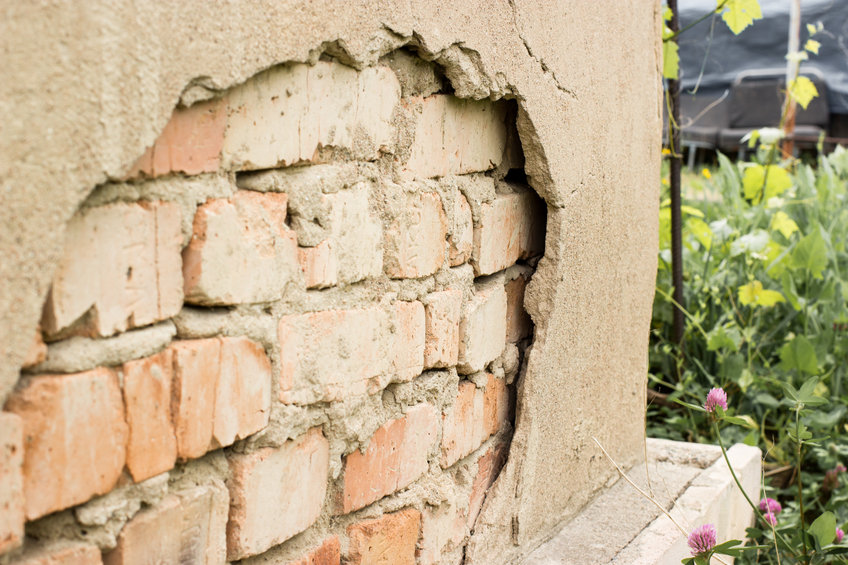Repairing a Brick Wall – Step by Step
Step 1 – Get the Right Gear and Tools
Since you are doing construction work, you need to equip yourself with the right protective gear.

Step 2 – Remove Old Mortar
Remove the old mortar from the head and bed joints to a depth of around ¾ inch. You can do this using a cold chisel or carbide-tipped grout saw. A brick hammer or a 5-in-1 painter’s tool can also do the job.
Step 3 – Clean the Brick Wall
Clear the removed mortar and accumulating debris using a stiff-bristled brush, compressed air, or a whiskbroom. When done, wet the wall using a garden hose sprayer to help the new mortar set properly.
Step 4 – Mix the Mortar
Mix the mortar based on the manufacturer’s directions as you add water. Do this while stirring with a trowel. Aim for the mortar to achieve a thick consistency. Allow the mortar to sit for a couple of minutes before stirring again.
Step 5 – Add the New Mortar
To do this, scoop some mortar using your trowel and push it into the joint using a pointing trowel. Repeat this several times until the void is filled completely. Once the bed joints are filled, repeat the process on the head joints.
Step 6 – Brush and Finish the Wall
After adding the new mortar, it will become firm and steady. All you need to do now is brush across the wall using a bristled brush to eliminate any mortar pieces that could have been left on the wall. You could also use a wet sponge to get rid of any mortar residue. In case of extreme weather conditions, you can tarp the new joints to protect them from heavy rain, strong winds, or extreme sunlight. You will have to water the wall using a garden hose sprayer at least twice a day for about five days. This helps the new mortar to dry without cracking.
Other Methods to Repair a Brick Wall
- Sealing
Sealing cracks can be another great alternative to using mortar for repairing a brick wall. To go about this process, first, remove any loose material on the brick. Then, place a plastic injection port on the crack’s surface on both sides. You can use a sealant like epoxy to seal the injection port. The epoxy sealant should freeze, filling a low-fluidity epoxy resin into the port. If you are dealing with a horizontal crack, fill the resin in one end port. However, if it is a vertical crack, then fill the resin in the lowest port.
- Stitching to Repair Cracks
Stitching is a repair method meant to repair large cracks on the brick wall. To do this, all you need is to drill holes around the crack. Afterward, chase grooves in between the drilled holes and then place a U-shaped steel groove on both sides of the hole. You can then use a non-shrink grout-like epoxy to do the hall grouting.
- Rebuilding Portions of the Wall
If you are dealing with a lot of damage on the wall, then you might consider rebuilding some of the portions instead of repairing them. Major defects are better off handled by rebuilding the wall. This leaves you with a sturdy and firm wall with no issues.
A brick wall serves a great purpose in your house by boosting overall appearance. However, this cannot be possible if the brick wall is damaged. This is the main reason why you should consider repairing the brick wall as soon as you see signs of damage. You can do the repair by yourself implementing the aforementioned tips. However, you may lack the tools or expertise to do a great job. This is why you may want to leave this job to the experts.
